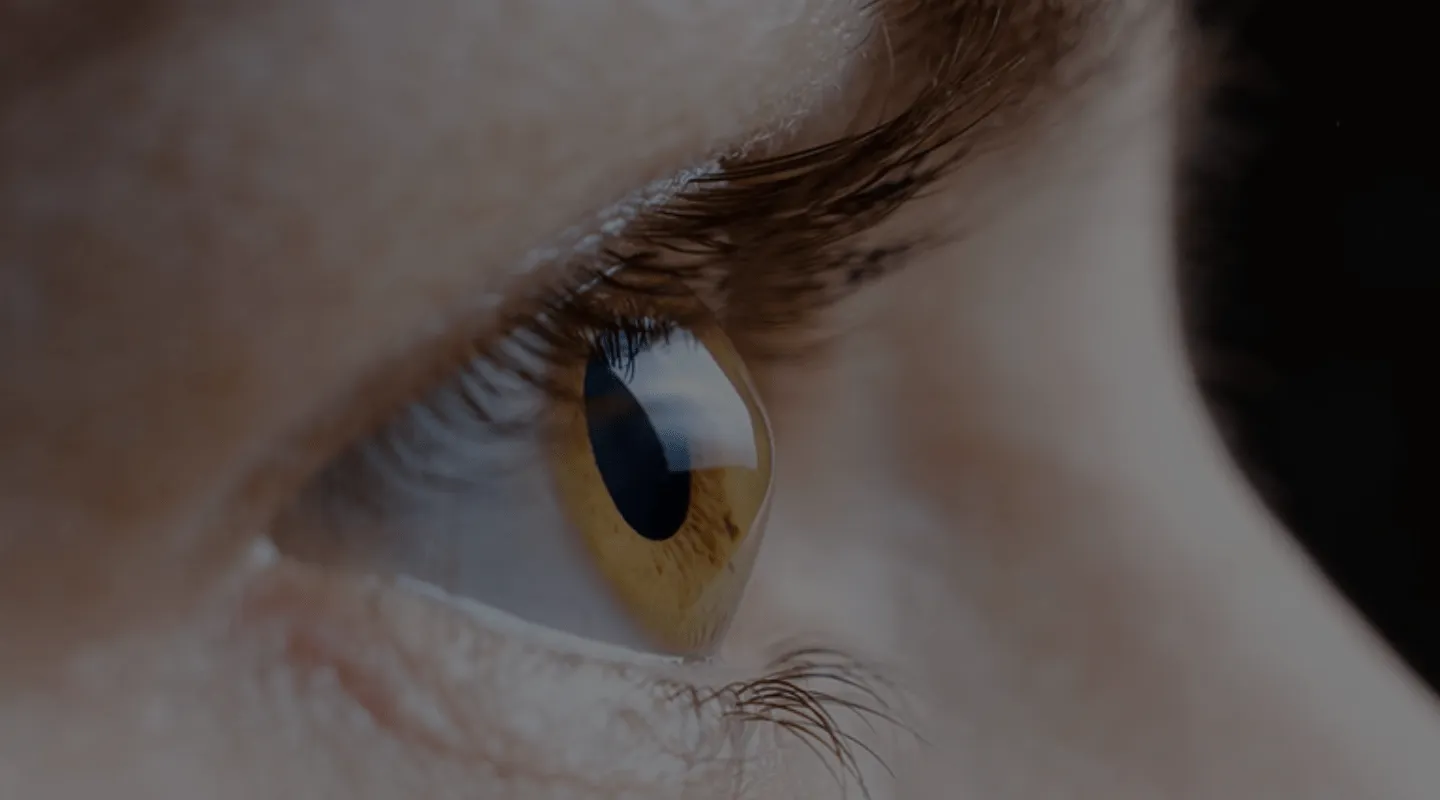
Corneal Transplant
Your Corneal Transplant in Tunisia at Affordable Prices
Benefit from advanced techniques and a reassuring care environment at competitive rates.
How does it work?
What is a Corneal Transplant?
To improve your impaired vision, a corneal transplant in Tunisia is an effective solution. Thanks to this surgical procedure, the damaged cornea can be replaced with a healthy cornea from a donor. Discover everything you need to know about this procedure: its indications, its process, and its costs. Corneal transplantation is one of the most commonly performed organ transplant operations worldwide today. The procedure is simple and quick, and the results are remarkable: thanks to this intervention, you will be able to regain clear and sharp vision, free from any visual impairment. In Tunisia, renowned ophthalmological surgeons have successfully performed numerous corneal transplants for many years. Concretely, keratoplasty consists of removing diseased corneal tissue and replacing it with healthy tissue from a donor. This operation is recommended for patients suffering from corneal curvature and transparency problems. This phenomenon generally occurs due to old age, although other causes may be involved.
Who is a Corneal Transplant For?
The cornea is the transparent, convex structure located at the front of the eye, playing a crucial role in vision by helping to focus light on the retina. It is for everyone, as it is essential for clear and sharp vision. However, certain medical conditions may require special attention to the cornea. People suffering from corneal diseases such as keratoconus, infections, dystrophies, or scars from eye injuries often need to consult a specialized ophthalmologist. In addition, individuals experiencing symptoms such as eye pain, blurred vision, increased sensitivity to light, or persistent redness should be evaluated for potential corneal problems. Treatment options may include specialized contact lenses, medications, or, in some cases, surgical interventions such as corneal transplantation. Early attention and appropriate care can greatly improve the quality of life and vision of those affected by corneal problems.
What is the Price of a Corneal Transplant?
Tunisia Destination Santé offers very advantageous packages with corneal transplants in Tunisia priced from 3000 euros. Our packages include all the costs of the operation. Increase your purchasing power by choosing our clinic! Our prices are well below those practiced in Europe. Contact us today to learn more and get a detailed quote. Don’t miss this opportunity!
Your health, our priority.
Request your free quote.
Corneal Transplant: What You Need to Know Before the Operation
For better readability, the conditions that may justify a corneal transplant are multiple. This may be an infection or an eye disease impairing vision, severely damaged cornea, edema, or excessive thinning of the cornea. These problems can lead to decreased visual acuity, vision changes, blurred vision, and even unpleasant sensations in the eye. After a thorough ophthalmological examination, the surgeon will be able to confirm the diagnosis and suggest a corneal transplant to solve your eye problems durably. Before the procedure, other tests will be necessary such as blood tests and a complete health check-up. You will also need to meet with the surgeon and the anesthesiologist to discuss the operation. Once the diagnosis has been confirmed, the patient can order a cornea from a donor, with an estimated delivery time of approximately 2 months.
What Types of Corneal Transplants Are Available?
In the medical field, there are different procedures to treat corneal problems, called corneal transplants or keratoplasties. The first option is the full corneal transplant, also known as penetrating keratoplasty, which involves replacing the damaged cornea with a healthy cornea from a deceased donor. Another method is anterior lamellar corneal transplantation, which only replaces the front part of the cornea. In contrast, posterior lamellar corneal transplantation involves replacing the back part of the cornea. Finally, combined corneal transplants, which are more complex surgical procedures, combine different techniques.
How Does a Corneal Transplant Proceed?
Corneal transplantation is performed under general anesthesia, although local anesthesia may be considered in certain situations. The duration of the procedure will depend on the surgical techniques used by the physician during the operation. Two possible options: a penetrating graft, which takes less than an hour and consists of completely replacing the cornea, or a lamellar graft, which lasts about an hour and a half and only replaces the diseased part of the cornea. Once the graft is performed, sutures are performed to conclude the operation.
What Precautions Should Be Taken After a Corneal Transplant?
After a corneal transplant, you shouldn’t experience severe pain. However, it is essential to scrupulously follow your surgeon’s instructions for a successful recovery. Your doctor will prescribe eye drops, and it will be important to avoid any physical activity for several weeks. You will also need to protect your eyes until the scar is fully healed and strong.
Corneal Transplant Recovery Time
The recovery time after a corneal transplant can vary considerably depending on several factors, including the type of transplant performed, the patient’s general health, and the individual eye’s response to surgery. In general, complete recovery can take from several months to a year. The first few weeks after surgery are crucial: the patient must rigorously follow the doctor’s instructions, including the regular use of antibiotic and anti-inflammatory eye drops to prevent infections and reduce inflammation. It is essential to avoid any strenuous physical activity and to protect the eye from any trauma. Regular follow-up appointments with the ophthalmologist allow monitoring of corneal healing and early detection of any complications, such as graft rejection or infection. Although vision may improve gradually, it is normal to experience blurred vision or visual fluctuations during the recovery period. With appropriate care and continuous medical monitoring, the majority of patients experience a significant improvement in their vision after a corneal transplant.
What Are the Side Effects of a Corneal Transplant?
Corneal transplantation, while generally safe and effective, can lead to certain side effects and complications. Among the most common, patients may experience pain, discomfort, or a foreign body sensation in the eye, particularly in the days following the procedure. Redness, itching, and increased sensitivity to light are also possible. Another frequent side effect is blurred vision, which may persist for several weeks or months as the transplanted cornea heals and adapts. In rare cases, more serious complications can occur, such as graft rejection, which manifests as a sudden decrease in vision, intense eye pain, and inflammation. Other risks include infections, bleeding, or corneal scarring. It is crucial for patients to follow their ophthalmologist’s postoperative recommendations and promptly report any worrisome symptoms to ensure optimal recovery and minimize complications.
Corneal Transplant Success Rate
The success rate of corneal transplantation is generally high, reaching approximately 90%, making it one of the most effective surgical interventions in ophthalmology. This success is attributed to several factors, including improvements in surgical techniques, the use of carefully selected donor tissues, and rigorous postoperative monitoring. Most patients experience a significant improvement in their vision in the months following surgery, with improved quality of life and improved ability to perform daily activities. However, it is essential to note that this success rate may vary depending on several factors, such as the patient’s general health, the presence of pre-existing eye diseases, and the motivation to follow medical recommendations after surgery. With appropriate care and continuous monitoring, corneal transplantation offers promising results, allowing many patients to regain clear and functional vision.
Our advantages


Your Corneal Transplant Operation
With Tunisia Destination Santé, organizing your corneal transplant is simple and fast. For anyone wishing to benefit from a medical stay in our country, simply contact our team. You can reach us by phone or via our online contact form. We will be happy to assist and guide you throughout the procedure.
—
Frequently Asked Questions
Fuchs’ endothelial dystrophy can be treated with two types of grafts: endothelial keratoplasty (DSEK or DMEK) or penetrating keratoplasty (PK). DMEK is often preferred because it offers faster visual recovery and better long-term stability.
Yes, some modern techniques such as DMEK (Descemet’s membrane endothelial keratoplasty) do not use sutures. This method uses a very thin layer of transplanted endothelial cells that naturally attach to the patient’s cornea.
Tissue banks follow strict protocols for graft selection and preservation. This includes testing for transmissible diseases, assessing tissue quality, and preserving grafts under controlled conditions to maintain their viability.
Immune rejection is a risk, but it is relatively rare with good medical follow-up. Patients receive steroid eye drops and immunosuppressants to reduce this risk. Signs of rejection include blurred vision, redness, or pain and must be treated immediately.
The lifespan of a corneal graft can vary, but on average, it is 10 to 15 years. Regular follow-ups with an ophthalmologist are essential to monitor the graft’s condition and manage any potential problems.
Yes, it is possible to undergo multiple corneal transplants if the previous graft fails. However, each successive transplant may be more complex due to scarring and increased immune responses.
Recent innovations include corneal stem cell transplantation, the use of collagen matrices for corneal regeneration, and improved endothelial keratoplasty techniques such as DMEK for faster recoveries and optimal visual results.
Environmental conditions such as pollution, UV exposure, and dry climates can affect recovery. Patients should avoid dusty environments and use sunglasses to protect their eyes from UV rays.
Contraindications may include active eye infections, uncontrolled inflammation, or severe systemic conditions that compromise healing. A complete evaluation by an ophthalmologist is necessary to determine eligibility.
Signs of complications may include intense eye pain, blurred vision, sensitivity to light, excessive redness, or discharge. Any unusual symptom should be reported immediately to an ophthalmologist for prompt evaluation and treatment.
